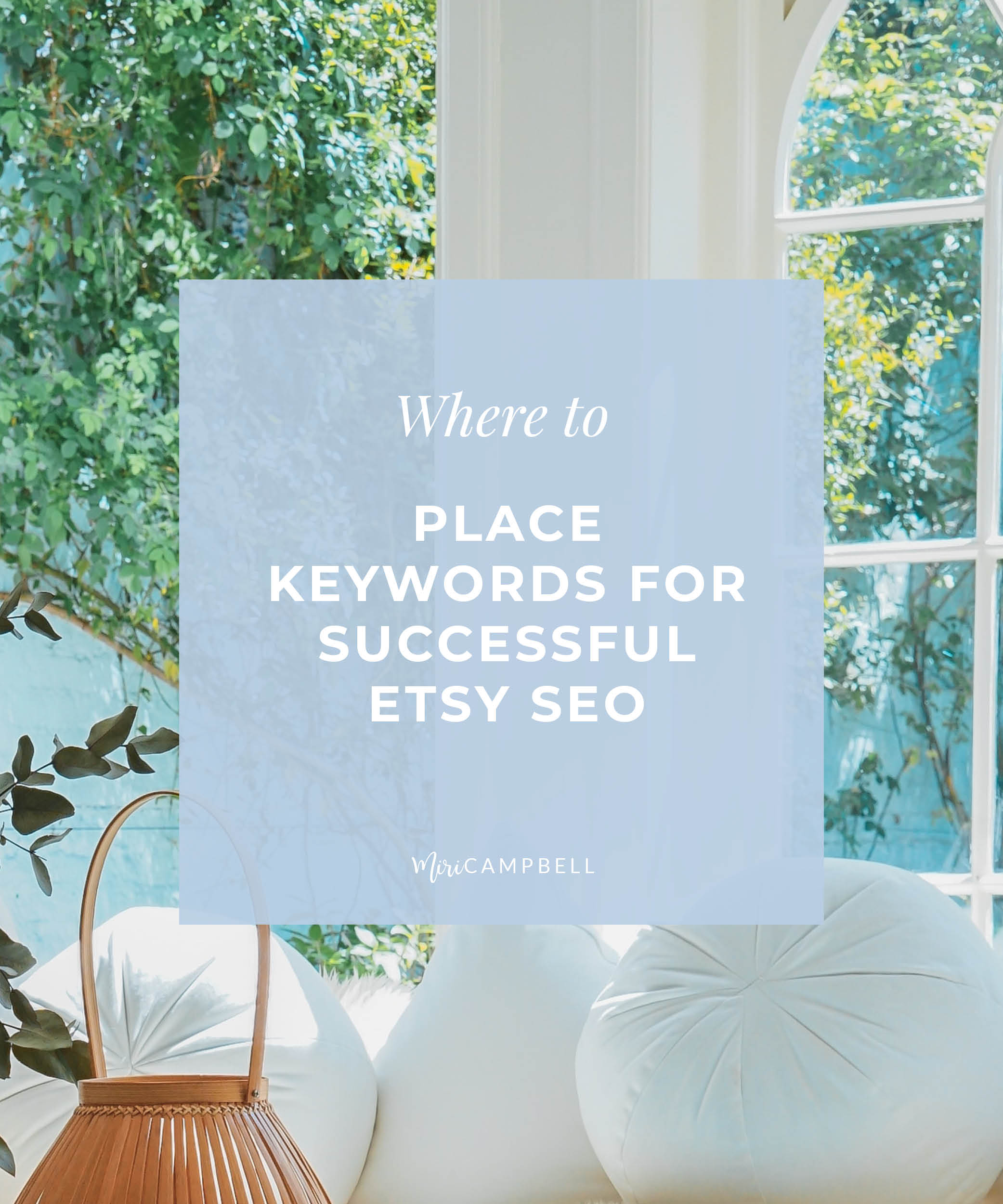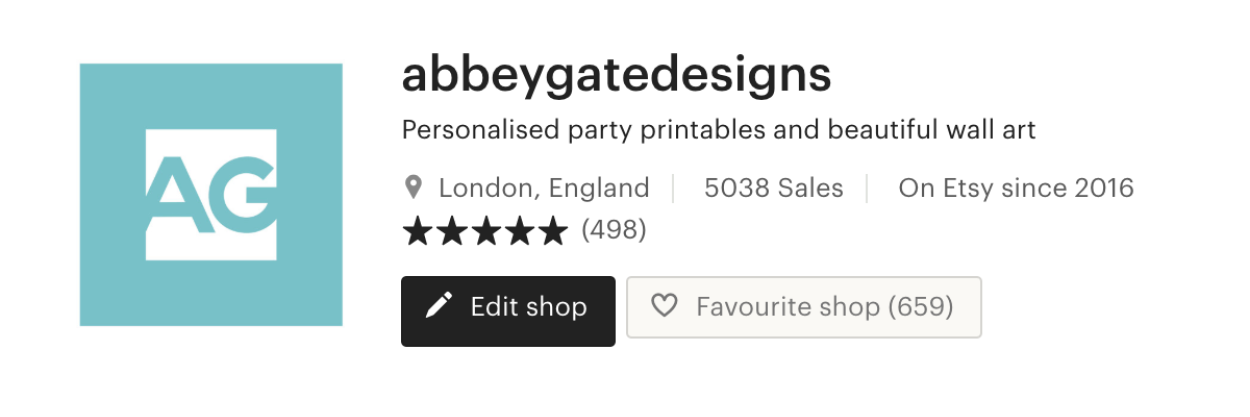
This post is part of a 4-part blog series which dives deep into how Etsy SEO works and tells you exactly what you need to do to grow a profitable Etsy shop. Be sure to check out the other posts too:
Where to place keywords for Etsy SEO – the best spots
When you have a list of killer keywords then the next step is positioning them to have maximum impact.
I have a keyword planner tool that is great for deciding on what keywords you should choose for each of your products. It is included as part of my free SEO Crash Course for Etsy Sellers and you can grab your copy by signing up to my email list below.
1. Title
Include a short but clear descriptive title using all 140 characters.
Use the focus keyword at the very beginning followed by other keywords. This makes it crystal clear to shoppers what you’re selling.
The first 40 characters of your title are the most important. In a search this is the only part of the title that will appear.
The rest will only be visible if the customer clicks on your listing. So, make the first 40 characters count and use your most relevant keywords here.
When you fill your title with your chosen keywords, you need to make sure it makes sense.
Etsy loves well-crafted, easy-to-read titles that describe your items fully. Therefore, aim to separate keyword phrases with punctuation so that your titles are readable.
Also, Etsy doesn’t like words repeated in titles, so try not to do this.
2. Tags
Etsy tags are the primary location to place keywords. They help to match a customer’s query with your product. You can add up to 13 tags for each listing and each tag can be up to 20 characters.
Take the keywords directly from your title and include these as tags.
If keywords are too long, then split them into two tags and place next to each other.
If you have any other tags left over, use other words that your customer would use to search for your product.
Etsy’s advice is to be as specific as possible when choosing your tags. Therefore, choose the exact wording shoppers would type into a search to find your item.
For example, someone looking for an art print is likely to be specific with their search terms and type in “baby boy nursery art” instead of just “art print”.
Get used to studying key performance indicators in the Stats section of your Etsy shop. You can find out how to do this here. Commit to updating any tags that are not driving traffic.
Aim to use different tags for similar items. By diversifying your tags, you can get your listings in front of more customers and your items won’t be competing with each other.
Don’t waste tags to include plurals of keywords. When a customer enters a search term, Etsy looks at the root of the word and matches with any similar root words in your tags.
If the categories and attributes already include a keyword, then you don’t need to repeat it in your tags. For example if you had the category and attributes shown below, you wouldn’t need to repeat “birthday invitations” or “pink and green” in your tags.

3. Product Description
Again, as for the product title, aim to use your focus keyword in the beginning of your description.
This description should be engaging, written in natural easy-to-read language. It must include everything the shopper needs to know such as what the item is, how to order, shop policies, and returns. Here are step by step instructions on how to write an Etsy product description.
When your customer is fully informed about your product, they’re more likely to buy.
Note that Google uses the first 155 characters of your product description for your meta-description (a snippet providing a summary of your item that appears in Google search results).
So, to make the most of this include your focus keyword, a short description of the item followed with a call to action in the first 155 characters.
Like this:

Optimize for on-page SEO by including all of your 13 tag keywords in natural sounding sentences in your description.
Try not to stuff these words unnaturally and avoid listing all of your 13 tags at the beginning of your description in one long line separated by commas.
Google and Etsy both hate unnatural keyword use as it can be very confusing for customers.
Instead, include your tags as naturally as possible in sentences and this will help you to rank higher in search results when a buyer searches for one of your tags.
Additionally, somewhere in your listing provide links to similar products or back to your shop home page.
Adding these links will help to increase engagement and click through rates for your shop and raise the chance of making multiple sales.
4. Etsy Shop Title

The shop title is the section of text below your shop name.
Use your main keywords to describe your shop and the service you offer in the shop title.
The Etsy shop title can be up to 55 characters long so make it concise and clear.
Then, take these keywords and use them in any relevant shop product descriptions to help your external search ranking.
5. Etsy Shop Sections
Your shop sections help customers navigate around your shop and are also a prime place to put keywords to boost your SEO.
Make sure you are accurately describing these sections using words your customers would use.
You can have up to 20 custom sections, and each section name can be up to 24 characters.
Feeling confident about where to place keywords?
Now you’re ready to have a go yourself.
However, if you’re looking for some more help with your SEO, then download the SEO Crash Course for Etsy Sellers eBook.
Its pages are packed with how to run your SEO to give your Etsy shop traffic and sales a boost.

Need more help with where to place keywords?
It feels like so much to take in when trying to work out where to place keywords.
I know it seems that there’s a mountain of information but even if you only implement one or two things we’ve talked about, over time you’ll start to see some impressive results.
But remember, I’m here to help you and you can chat with me any time.
So get in touch below with a link to your Etsy shop – I’d love to hear from you and see what you’ve created.
